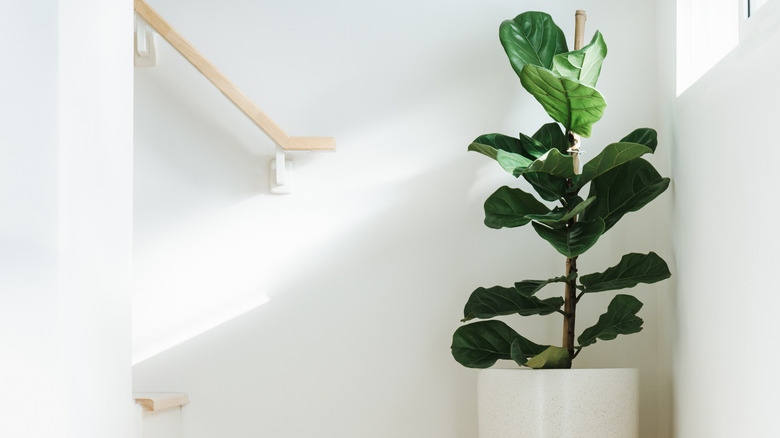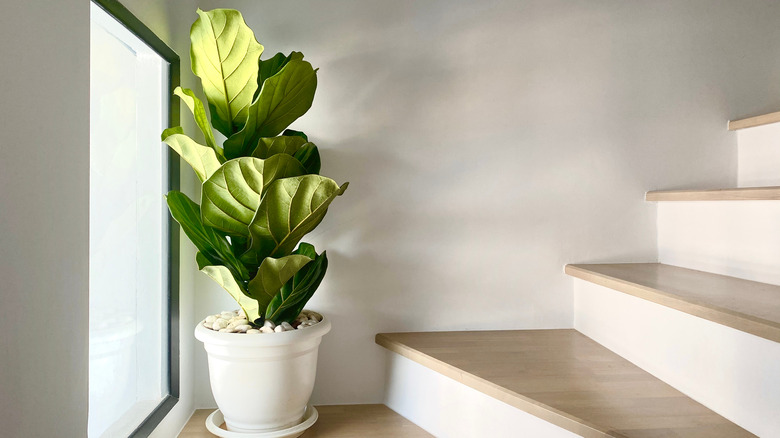How To Take Care Of A Fiddle Leaf Fig
If you're a plant parent with a decent amount of experience under your belt, it might be time for you to branch out. While you may be scared of making common houseplant mistakes, there is a whole world of houseplants to explore beyond the Chinese Evergreen and the Jade succulent. You don't have to stick to Good Housekeeping's list of greenery for beginners any longer, either. You're ready to graduate.
If you want to conquer a true beauty, look no further than the fiddle leaf fig. The elusive, broad-leafed dame was named the "mean girl" of plants by The Sill for its fickle ways and temperamental personality. With care, understanding, and a few crucial tips, however, we think you can nurture the fiddle leaf to its fullest, healthiest form. But first, you need to know its background.
As explained by Greenery Unlimited, the fiddle leaf fig tree is native to the rainforests of western and central Africa. What does this mean for you? First, you will need to place it far away from air vents and drafts, so that it stays nice and warm.
The giant, buttery leaves of the fiddle leaf fig also require plenty of sunlight to reach their fullest potential. Seriously, we mean it. Greenery Unlimited noted that you should position this plant in front of a south or western facing window, where it will receive the most sun. If you don't have enough light to satisfy every leaf, consider purchasing a tiny fiddle leaf fig instead, as suggested by Gardenista.
The fiddle leaf fig requires just the right amount of water and lots of attention
Watering is another tricky component for the fiddle leaf fig. In its native environment, this delicate tree receives ample water, but is never truly soaked, per Greenery Unlimited. As such, you might try to keep the soil damp, and attempt to water the plant as soon as the soil dries out. Experts reporting for Good Housekeeping noted placing a fiddle leaf fig in a well-draining pot so that excess water does not sit in the roots.
According to The Sill, the most important sign of stress for the fiddle leaf fig can be spotted in its leaves. Drooping leaves can be an indication that your tree is dehydrated, chilled by a draft, or not getting enough sunlight. In addition, this plant is more susceptible to pests and diseases than other houseplants. To reduce the chances of pests and disease, the Clemson College of Agriculture noted that you should inspect the soil and leaves for pests before placing the plant in your home. Also, keep your fiddle leaf far away from other plants and wash the leaves every two to three weeks. Above all, keep researching tricks and remedies. Knowledge and attentiveness are the keys to success with the fickle fiddle leaf.
The most important thing to remember with houseplants, however tricky they can get, is that they're in your home to be enjoyed. Houseplants can have a positive impact on your physical health, your mental well-being, and can improve the quality of your at-home experience.

